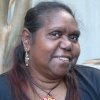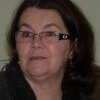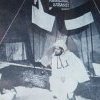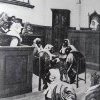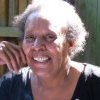1970s
1970
A public meeting is held at Redfern Presbyterian Church to propose an organisation which becomes the Aboriginal Legal Service. Founding and Council members include Paul Coe, Gary Williams, and Gary Foley. A council is elected including Charles French, Tom Williams and Gordon Briscoe. White members include Hal Wootten, Bob Debus, Garth Nettheim and Richard Chisholm. ‘…basically it amounted to Aborigines’ fear of a culture of police brutality and white lawyer self-interest.’ The new legal service is able to raise its own funds and where necessary arrange for free legal services and representation for any Aboriginal person in need. (V15, ‘They’d be waiting at the paddy wagon to fill it up’)
The boredom of inner city life for men brought up in the bush causes the decision to use the profits from dances in the Railway Institute in Redfern to support an all-Aboriginal football club. The first coach is Eric Mumbler. Among the first members are Peter and Ervine Duran, Teddy Duncan, Bill Waten, Harry Podham, and Boomanulla (Mervyn Williams).
A public meeting is held at Redfern Presbyterian Church to propose an organisation which becomes the Aboriginal Legal Service. Founding and Council members include Paul Coe, Gary Williams, and Gary Foley. A council is elected including Charles French, Tom Williams and Gordon Briscoe. White members include Hal Wootten, Bob Debus, Garth Nettheim and Richard Chisholm. ‘…basically it amounted to Aborigines’ fear of a culture of police brutality and white lawyer self-interest.’ The new legal service is able to raise its own funds and where necessary arrange for free legal services and representation for any Aboriginal person in need. (Briscoe p. 152) (C59) (C115) (V15, ‘They’d be waiting at the paddy wagon to fill it up’)
The boredom of inner city life for men brought up in the bush causes the decision to use the profits from dances in the Railway Institute in Redfern to support an all-Aboriginal football club. The first coach is Eric Mumbler. Among the first members are Peter and Ervine Duran, Teddy Duncan, Bill Waten, Harry Podham, and Boomanulla (Mervyn Williams).
1971
A woman living in Redfern with her husband and two children wishes to move to a Housing Commission house. A file notes that the family is willing to go to anywhere except Mount Druitt or La Perouse. The inspector writes: ‘The family is a reputable one. They have made honest and successful efforts to establish and maintain a high moral and emotional tone in the home. They had been plagued by relatives encroaching upon them and desire to be free of this type of environment.’ The family is allotted a house in Bradbury, near Campbelltown. (Morgan p.89; for more, see The Redfern Housing Crisis, in Stories)
The Aboriginal Legal Service is ‘created on the back of growing radicalism of the rural Aboriginal population migrating into the city. The thinking behind this radicalism is the need for legal protection for rural Aborigines, who brought with them a lack of understanding of urban European culture.’ (Briscoe, p. 151) V10, (‘The Aboriginal Legal Service: Gordon Briscoe’)
Murawina is established, an Aboriginal-run kindergarten in Chippendale by Norma Williams and Milly Ingram of the Black Womens Action Committee. The Dictionary of Sydney describes it as beginning as a breakfast program. At the onset of winter the women are allowed the use of an empty factory building. Esther Ingram also runs programs for women in the Murawina Multi Purpose Education Centre. Sylvia Scott (Ingram) and their mother, Auntie Louisa Ingram, are vital in the growth of Murawina. It becomes a model for other Aboriginal run pre schools around NSW.
In June 1971, The AMS is established at a meeting involving people who are concerned about Aboriginal health in Redfern. At the meeting are Shirley Smith, Sister Ignatius Jenkins from the St Vincents Hospital, Gordon Briscoe, Dulcie Flower, Professor Fred Hollows, Ross McKenna, John Russell from South Sydney Community Aid, Paul Coe from the Aboriginal Legal Service and Eddie Neumann. They decide to set up a shop front Aboriginal Medical Service at 171 Regent Street Redfern. It is staffed initially by volunteers, but within months the AMS demands assistance from the Federal Government to continue to expand services. Naomi Myers and Beverley Briggs are active workers at the AMS. Naomi goes on to become a leader at the organisation for 40 years. Beverley Briggs also dedicates her life to AMS
1972
The Redfern Aboriginal Medical Service community bus is named after Wally Byers from Bourke who works as the first Aboriginal Liaison Officer with Pastor Bill Reid to build relationships between Aboriginal community and health staff. Dr Max Kamien writes an important book on Bourke Aboriginal health called The Dark People of Bourke.
Ruby Langford leaves Redfern for a Housing Commission house in Liverpool, where she finds that she has been ‘pepper-potted’, (housed with non-Aboriginal neighbours on each side). She writes, ‘It meant putting us in among whites to see if we could live together but because there were so few black families there in 1972 we felt very isolated from our friends, our culture. All my neighbours were white, and there weren’t many black kids at the school.’ Ruby returns to the city most weekends. (Langford p. 174.)
After Prime Minister McMahon’s Australia Day address, Aboriginal activists including Paul Coe, Gary Foley and Chicka Dixon, agree to form a protest in Canberra. This becomes known as the Aboriginal Embassy. The Aboriginal Medical Service raises funds to pay for buses to take protestors to Canberra. Each week Gordon Briscoe notifies people through community radio and arranges for funds to be dropped at the Medical Service. He takes the hat around at locations like the University of Sydney, especially when Aboriginal speakers have the floor.
Dennis Walker, the son of poet Oodgeroo Noonuccal (Kath Walker) from Stradbroke Island is a major figure in the civil rights and land rights movements of the 1970s. Having himself been in court only a few days beforehand on the charge of possessing a concealable firearm, he tells reporters 'if you haven't got a gun, you have nothing. We're not going to get what we want by standing here and talking.” He is sent to jail.
The Aboriginal Housing Company (AHC) is formed based on the Block. (The Block is bounded by Lawson Street, Vine Street, Louis Street and Eveleigh Street.) Among the founders is Bob Bellear. A group of campaigners lobbies the Whitlam government to transfer ownership of The Block in Redfern to the Aboriginal housing Company. The grant facilitated by Whitlam allows the AHC to purchase and restore a group of six terrace houses. This is claimed to be the first instance of urban land rights in Australia. The AHC’s aim is to purchase all 68 houses on The Block to be renovated and rented by Koori people for Koori people. The plan is opposed by 226 residents of South Sydney who sign a petition, ‘We the undersigned residents of South Sydney vociferously protest, object and condemn the establishment of the ghetto in Louis and Caroline Streets by the Aboriginals who have squatted in these properties … we want the Aboriginal ghetto stopped now – for if allowed to continue it will spread like the plague throughout the entire South Sydney area.’ This group is called the South Sydney Residents Protection Movement. ) (V 37, ‘It’s time to end this vicious cycle of racism’)
The National Black Theatre begins in Redfern. The original concept for the theatre grows out of political struggles for Aboriginal rights. They hold workshops in modern dancing, tribal dancing, writing for theatre, karate and photography, and provided a venue for new Aboriginal drama. It also runs drama classes under Brian Syron who conducts the first of a planned series of six-week fulltime workshops for his students who included Jack Davis, Freddie Reynolds, Maureen Watson, Lillian Crombie, and Hyllus Maris. Aileen Corpus is acting in productions. These people go on to become well known in the Aboriginal community for their work in the Australian theatre and film industries. (V20, ‘I got to do my dreams’)
Street theatre is organised by the Aboriginal community in Redfern as a form of political action. It supports many rallies and protests in the 1970s. Gary Foley supports the establishment of the Aboriginal Legal Service, and raises awareness about the Tent Embassy in Canberra. Street theatre supports land rights demonstrations organised by the Black Moratorium Committee. “Sketches and street theatre ... in hotels, in lounges of pubs... We performed as black theatre groups, as street groups, in the marches. Black theatre would get involved with all the political demonstrations.” [Gerry Bostock] http://en.wikipedia.org/wiki/Black Theatre_(Sydney) (V 40, ‘Chicka Madden’s Redfern: The Aboriginal Legal Service’)
1973
Aboriginal Hostels Limited (AHL) provides temporary accommodation to Aboriginal and Torres strait Islander people. It goes on to run hostels throughout Australia. AHL is a government-owned company within the Families, Housing, Community Services and Indigenous Affairs portfolio. In 2010 Debbie Frail is manager of the Chicka Dixon Hostel and Anne Martin is regional manager. (V 41, ‘Hostels, to me, is a sense of family history’)
The Aboriginal Housing Association is legally Incorporated. Bob Bellear explains, ‘The whole aim of the project is to bring Aboriginal people together so that we can live in the way we want to live and share what we have with one another. Many of us are now living in slums and ‘pig sties’ because we cannot afford the high rents. It is difficult to get jobs because we have no skills and because white people don’t want to employ us. We can’t be proud to live in these conditions. But when we are living together we will be able to help each other to learn skills and to get jobs and, most importantly, we will be proud of our houses and proud of our community. (Pitts 3/7 and ‘Aboriginal Australia the Redfern Example’ in Aboriginal News, No. 9, 1974, p. 18)
The NSW Police 21st Division, originally created in the 1930s to deal with razor gangs, is apparent throughout the Redfern area. Mum Shirl recalls, ‘The police were having a field-day, especially in Redfern, where they would just drive in, load paddy wagons full of Blacks, and charge them with being drunk. Quite a lot of the people arrested like this were not only not drunk, but they didn’t even drink, ever.’ (Pitts p. 3/16), (V 54, ‘Gordon Briscoe’s Redfern: the Police were at war with us’)
1974
The National Black Theatre finally secures government funding and opens an Art and Cultural Centre in a warehouse in Botany Street, Bettie Fisher is appointed administrator. The Cake Man, written by Robert Merritt, is the theatre's first formal production, with Justine Saunders and Zac Martin and Bindi Williams. On opening night, the theatre is so packed that many people stand outside and listen through the walls. The playwright is a prisoner at Long Bay jail and is escorted to the performance by police guard. On the stage at the end of the performance, he is presented with a cake. (V55 ‘Redfern saved my life’)
Chicka Madden remembers one of the best Redfern All Black football sides ever. Members included Ambrose Morgan (Captain Coach), Bimbo Widders, Andrew Donnelly, Alan Madden, Micky Mundine, Frankie Vincent, Kenny Mundine, Kevin Anderson, Stevie Ridgeway, Danny Slater, and Gordon Williams, Other members of the team were Wes Patten, Cec Patten, and Ronny Merritt. Kenny Brindle is the President. (V 13, ‘The Redfern All Blacks’)
The Aboriginal Education Assistants Training Program begins at the University of Sydney in the Mackie Building. Alan Duncan is the organiser acting on the initiative of several Aboriginal Teaching Assistants from Caroona. Terry Widders and Barry Thorne are among the Aboriginal educators involved in teaching on the program.
1975
Chicka Dixon recalls the Koori population increase in Redfern ‘Because Aboriginal people in Sydney have nowhere to stay, they go in to areas where they have relatives. I’m no exception. Yes, some of my people come from Wallaga Lake, I put them up. Where else have they to go? If I haven’t a bed they sleep on the floor. They sleep anywhere. I have had up to fifteen or twenty sleeping in my house…Georgina Street…is referred to as the 'Georgina Street Mission', there’s so many black people there.’ (Morgan 97) (V56, ‘I’m the eldest of nine sisters’)
1976
An upsurge of Indigenous cultural pride leads to the birth of a unique new dance form led by American dancer Carol Johnson: Contemporary Australian Indigenous Dance. This new dance form springs from collaborations with Indigenous Aboriginal dance creators, Western trained choreographers and traditional cultural owners. Workshops follow for young people keen to learn and perform the new dance fusion. This is the genesis of NAISDA Dance Academy, later College. (V39, ‘The Aboriginal Dance Theatre’).
1978
Essie Coffey, film maker co-creator with Martha Ansara launches the ground-breaking documentary MY SURVIVAL AS AN ABORIGINAL. It is a disturbing presentation of atrocities and hardships committed against Aboriginal people in Brewarrina, NSW. Winning prizes around the world, the film is broadcast overseas, shown on the ABC and used widely in Australian education. www.balladfilms.com.au












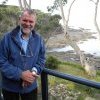
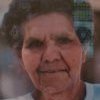
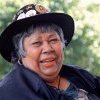
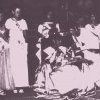
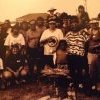
 visit to Tranby in 1967, writer and political activist visits Tranby.thumbnail.JPG)
